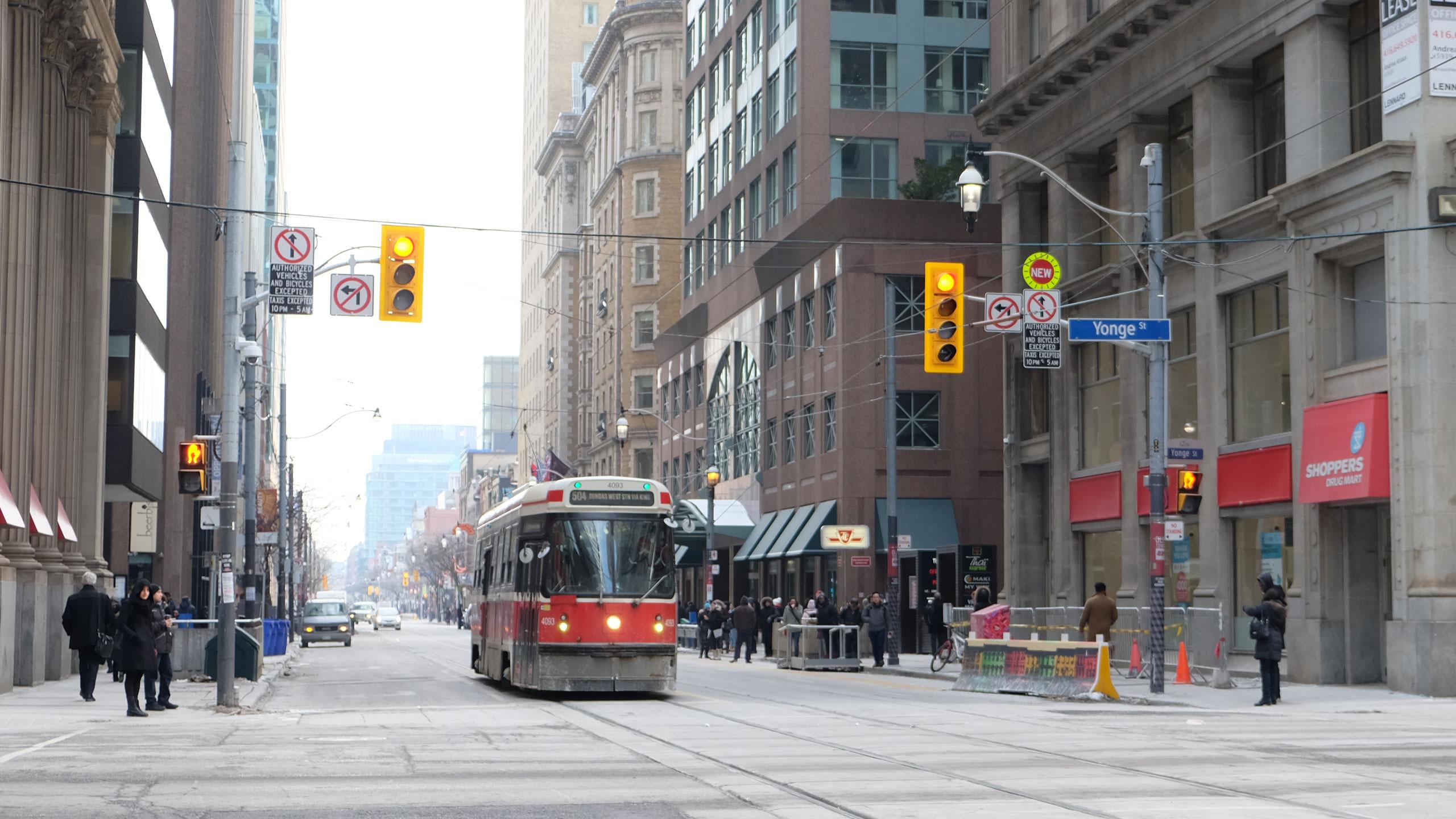By Sera Wong
Tor Oiamo is an assistant professor of geography and environmental studies and currently the only Ryerson professor on the team of U of T researchers who are studying the King Street pilot project. The study is focused on the level of noise pollution along King Street, as well as any changes before and after the project.
The U of T and Ryerson team plans to compare the air quality, noise level, and level of mobility from before and after the pilot in order to observe any changes.
The King Street Transit Pilot aims to cut down on traffic along King Street by implementing traffic changes between Bathurst Street and Jarvis Street, prioritizing streetcars and pedestrians, and directing cars to take sideroads as an alternative route. King is the busiest surface transit route in Toronto, but suffers from slow travel speeds due to crowded roads and streets.
Cars are not completely banned from King Street, but their movements are restricted at most intersections to allow for cyclists, pedestrians, and local transit to take precedence.
“We’re studying noise, air quality, and mobility changes so we’re interested in how travel patterns change,” Oiamo said. “And if we get to it at some point, our ideal outcome would also be to look at potential health impacts or health benefits of this.”
Oiamo said that repeated exposure to noise pollution can start with annoyance and loss of sleep, and lead to stress, and the symptoms associated with stress such as high blood pressure and cardiovascular disease.
Though trucks and buses are louder than cars, there’s fewer of them, so the predominant source of noise pollution comes from cars and on King Street, about 20,000 vehicles use this street every day.
Oiamo said that they expect significant reductions in traffic noise and overall noise along King Street, but one of the additional effects would be an increase of traffic on nearby streets.
“…We actually know from previous research that increasing traffic volumes on roads that are already busy doesn’t actually make them any louder,” Oiamo said, “so overall for the entire area, which includes streets around King Street, there will be a significant reduction in noise exposure.”
Nicholas Kwong, a Waterloo co-op student currently working at OANDA on King Street, says that he doesn’t see a lot of cars on the street.
“I come and go at nine and five but I don’t really see any traffic jams,” he said. “There are a lot of people walking on King, but it’s not as busy as Yonge and Dundas.”
As a someone who uses local transit, though, he did notice one thing.
“The streetcars are always packed,” he said. “Everyone gets on and off at King. I don’t hate using the TTC, but I do when it’s overcrowded. People have to squish themselves on and it’s never comfortable for anyone.”
The air pollution team from the group of researchers will be analyzing ozone, black carbon (soot), ultrafine particles, carbon monoxide, carbon dioxide, and particulate matter 2.5, an air pollutant known to have negative health effects.
Marianne Hatzopoulou, a civil engineering professor at U of T has some of her students assisting her with gathering data on air pollutants associated with traffic-related emissions.
“We call it the scripted exposure study,” she said. “We basically have students who will be carrying GPS instruments with them as well as air quality monitors, and they try to mimic what a normal person would potentially do around the area.”
To ensure the data is as accurate as possible, her students take a streetcar, walk down the street, wait at intersections, or sit in coffee shops. This, like the noise level study, is done at different times of the day in different kinds of weather.
Cheol-Heon Jeong who is in the engineering program at U of T has also installed several AirSENCE devices throughout King Street, as another way to measure the air quality.
“We also attached our sensors onto streetcars,” he said. “So that means we may continuously monitor the level of concentration along the King Street area.”
Hatzopoulou says that this pilot project has more potential than just improving transit travel times. By eliminating cars off the road, she says, they are able to measure actual reductions in air pollution.
“And if [we] can,” she said, “Then that’s a very important story to tell because it’s not just a matter of improving travel times on transit on the streetcar… but it’s also about improving air pollution, noise, and potentially health. And that really sends a message to the city that these interventions are very much needed.”











Meri Gec
Please address the chimes and announcements on the new streetcars. They are way too loud for those of us who live on King St. I can’t open my windows anymore, and can hear them clear accross an intersection where the stop is, with windows closed. It’s seriously not ok to subject residents to this noise!